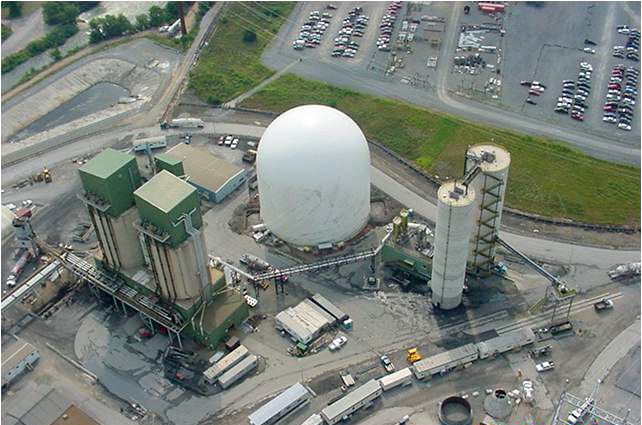Scope of Work
| Domes | Height | Diameter |
|---|---|---|
| #423 | 89ft | 168ft |
| #423 | 27.1m | 51.2m |
Three domes for Separation Technologies provide flexibility in reclaim, airtight storage
For fly ash storage and handling, industry-leading processor Separation Technologies contracted with Dome Technology three times over in three different states.
Today the company operates domes in Brandon Shores in Baltimore, Maryland, for utility company Raven Power; Brunner Island in York Haven, Pennsylvania, for Talen Energy; and Gibsonton, Florida, for Tampa Electric Big Bend (TECO). The domes are used for storage of high-quality concrete-grade fly ash produced by ST’s patented electrostatic separation process.
The domes were built between 2003 and 2007 after ST weighed the bulk-storage options and determined domes would deliver qualities the company was after. These domes ensure that quality product is available to ST’s customers throughout the annual construction demand cycle.
“For capacities over about 10,000 tons, domes are the most cost-effective, airtight storage for fine-particle materials,” said Ted Bush, senior project manager for Separation Technologies.
Because ST was looking for an economical storage method, domes were initially attractive for their less-expensive knee-deep foundations and lower costs for increased storage space, said Dome Technology sales manager Lane Roberts. By mitigating the need for deep foundations, tall domes like the three built for ST can be built on smaller foundations, taking up less property while providing ample storage built up, not out.
Customer requests + customization
For each dome ST specified two discharge outlets on grade—“this has ensured almost 100 percent recovery of stored material annually. With two easily accessible outlets, the availability of the dome reclaim system is also very high,” Bush said.
Additionally, ST was sold on major advantages with domes’ material-handling systems.
“Compared to silos, the lower ground pressure of the dome reduces construction costs. The dome shape is a natural pressure vessel, so the dome is well suited for loading by pneumatic conveying systems; however, because of the relatively large floor area, the reclaim system for a dome is more elaborate than for a silo,” Bush said.



